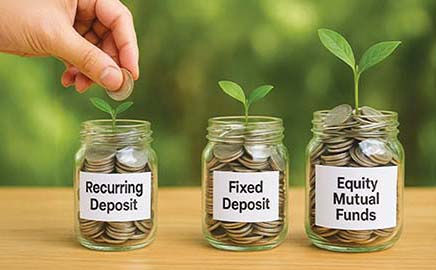The Magic of 0808
- Kaustubh Kale

- Aug 2
- 2 min read

If numbers could talk, 8 would speak the language of wealth. And when the date doubles into 8/8, it becomes more than just a day on the calendar - it becomes a symbolic reminder of financial power, balance, and long-term abundance. Interestingly, this date also coincides with what astrologers call the Lion’s Gate Portal, a period believed to bring heightened energy for growth and transformation. Whether or not you follow astrology, 8/8 offers a great opportunity to reflect on your financial journey and take meaningful steps forward.
Every year, August 8 (8/8) is considered a significant day in astrology and numerology. It marks the peak of what is known as the Lion’s Gate Portal - a cosmic window where the Sun in Leo aligns with the Earth and the star Sirius. Many believe this alignment creates a surge of energy around growth, abundance, and transformation.
Now, I am a financial advisor - not an astrologer or numerologist - but I still find this date fascinating for another reason: the symbolism of the number 8.
In numerology, 8 is the number of wealth, power, balance, and infinite flow. It is associated with karma, ambition, and financial mastery. When the calendar reads 8/8, it is believed to carry a double dose of that energy. And whether or not you believe in the stars, the pattern and intention behind this date can serve as a powerful financial checkpoint.
From a financial planning point of view, I like to treat 8/8 as a money mirror - a time to pause and ask yourself:
Are my investments aligned with my long-term goals?
Is my money truly working for me, or am I caught in a never-ending earn-and-spend loop?
Am I creating lasting wealth, or just temporary income?
Just like we make resolutions on January 1st, 8/8 can be your mid-year money reset - a chance to reflect and take action. Use this day to check your goals, review expenses, do lumpsum investments, increase SIPs, update insurance, or declutter your finances by unsubscribing from unused services, consolidating idle accounts and organising documents. These simple yet intentional steps can free up both energy and money - bringing you closer to your long-term financial goals.
And here’s a fun reminder: when you rotate the number 8, it becomes the symbol for infinity ( ). That’s what true investing is about - consistent actions, patience, and compounding over time. It is not flashy. It is not overnight. But it is magical.
So this 8/8, set an intention. Act on it. Even the largest fortunes begin with a few focused, mindful steps. Because when your daily actions start matching your long-term goals, that is when real transformation begins.
(The author is a Chartered Accountant and CFA (USA). Financial Advisor.
Views personal. He could be reached on 9833133605.)





Comments